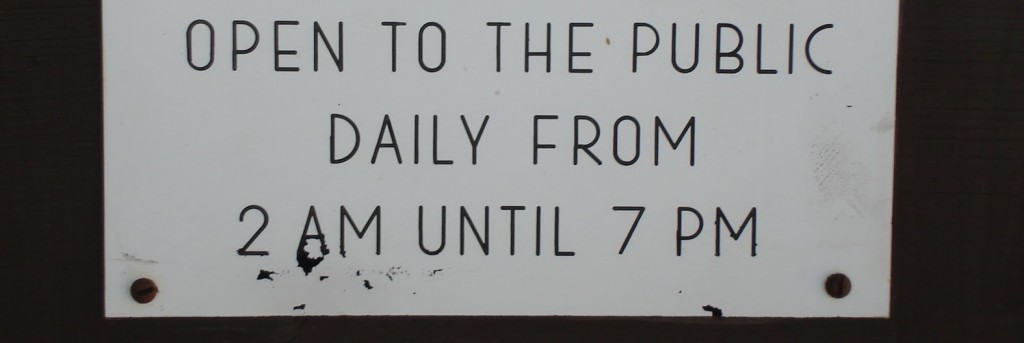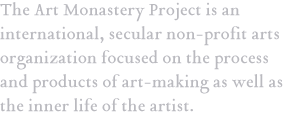2008-2009 -“Vespers” Preliminary Research: Vespro di S. Pancrazio for Calvi dell’Umbria’s feast day and in Orvieto with the Bishop of Orvieto, Franciscan Vespro di S. Francesco for the feast of St. Francis
2010-11 -“Compline” Preliminary Research. Observing the practice of evening Complines at the Colle di Costa in Labro.
Cycle 1
2012 – “Vigils: Intimacy with the Void“ – Art Monastic Laboratory produced original Ad Mortem in Labro, Italy
2013 – “Lauds: Facing the Liminal“ – Art Monastic Laboratory original work creation in Caramanico, Italy
2014 – “Prime“ – Art Monastic Laboratory original work creation in Caramanico, touring in Europe and UAE
2015 – “Terce: Golden Hour” – Art Monastic Laboratory original work creation in Caramanico, touring in US
2016 – “Sext: Noonday Sun” – Artmonk Practice Period in Lyons, CO
2017 – “None“
2018 – “Vespers“
2019 – “Compline“

More than just a structure in space, a monastery is a structure in time. With a regularity that can intimidate those outside the cloister walls, monks and nuns gather every few hours, every single day, for a cycle of rituals that involve chant, prayer, and meditation. Far from the kind of mind-numbing routines we sometimes fall into in secular society (I wake up, I shower, I drink my coffee, I check my email, I bike to work, I check my email…), the monastic routine is intended to refresh the soul, to build discipline, to act as a vehicle for deepening personal spiritual experience, and to connect the monk’s lived experience with the cyclical nature of time: from midnight to sunrise, noon to sunset. Darkness to light, and inevitably back to darkness.
Also known as the “monastic offices,” “the hours of the office,” or the “monastic Liturgy of Hours,” this cycle of rituals has structured the daily lives of monastics for centuries. And while there is much variation in the specific schedule and the names used for each ritual from tradition to tradition (and even from monastery to monastery), most western monastic schedules are designed to help monks “pray without ceasing.”
One version of the monastic schedule goes:
- Vigils (sometime during the night)
- Lauds/Matins (at sunrise)
- Prime (during the first hour of daylight)
- Terce (at the third hour)
- Sext (at the sixth hour)
- None (at the ninth hour)
- Vespers (at the end of the day)
- Compline (upon retiring)
(Source)

While the content of these rituals has centered on Christian religious tradition, the “technology” for achieving contemplative and creative depth that the monastic offices represent is one with applications in a much wider variety of settings.
As it is our mission to apply monastic principles to art making and the creative process, it is exactly this kind of technology that the Art Monastery Project is committed to investigating.
We want to develop our very own monastic offices—a kind of Secular Liturgy of Hours for Artmonks—with interpretations that come from our own artistic and contemplative experiences as Artmonks. But instead of “Monastic Offices” or “Liturgy of Hours”, we’re going to call our schedule “the Art Monastic Cycle.” It will probably be something similar to the eight rituals listed above: vigils, matins, prime, terce, sext, nones, vespers and compline. Though we probably won’t end up doing all eight rituals every day, they will all be a part of our ritual vocabulary and our collective understanding of temporal flow.
The rituals in our Monastic Cycle will necessarily each carry meanings that are authentically our own; as much as we we want to honor tradition, we need to make the monastic routine of work, eating, rest, reflection, ritual and contemplation our own. And in order to develop these authentic meanings, we need to so some research and reflection.
Thus, we have come up with an 8-year conceptual piece called, appropriately, “the Art Monastic Cycle”—a series of yearly investigations through research, dialogue, art making and contemplation. Each year for the next eight years, the Art Monastery Project will explore one of eight primary rituals of the western Monastic Office. Each ritual will serve as a springboard for the art that the Art Monastery Project produces that year and the contemplative life of the Artmonks.
And as the Art Monastery is a secular arts-production organization, each ritual will inevitably undergo various kinds of interpretation and deconstruction as it serves as a year’s theme. Embedded within each of the traditional Monastic Offices are a number of symbolic resonances. The evening Compline ritual, for example, can represent the anticipation of death, the onset of darkness, receptivity, letting go, and completion. On top of these, we will add our own meanings. Through yearlong explorations of Vigils, Matins, Prime, etc. we will, at the end of our eight-year research period, have developed rituals we can do as part of our daily Monastic Cycle.
We did some preliminary work from 2008-2011 with Vespers and Compline.
In 2012, we started where the new day starts—the midnight Vigils ritual—and focused on certain themes that the midnight hour suggested: darkness, emptiness, death, the Void… In 2013, we to looked at the Lauds ritual. 2014 was Prime, and 2015 Terce. 2016 was the year of Sext (not, by the way, the risque sexts you send your lovers, but as in the Latin “hora sexta” for “sixth hour”; an important distinction to make).
2017 is None.




